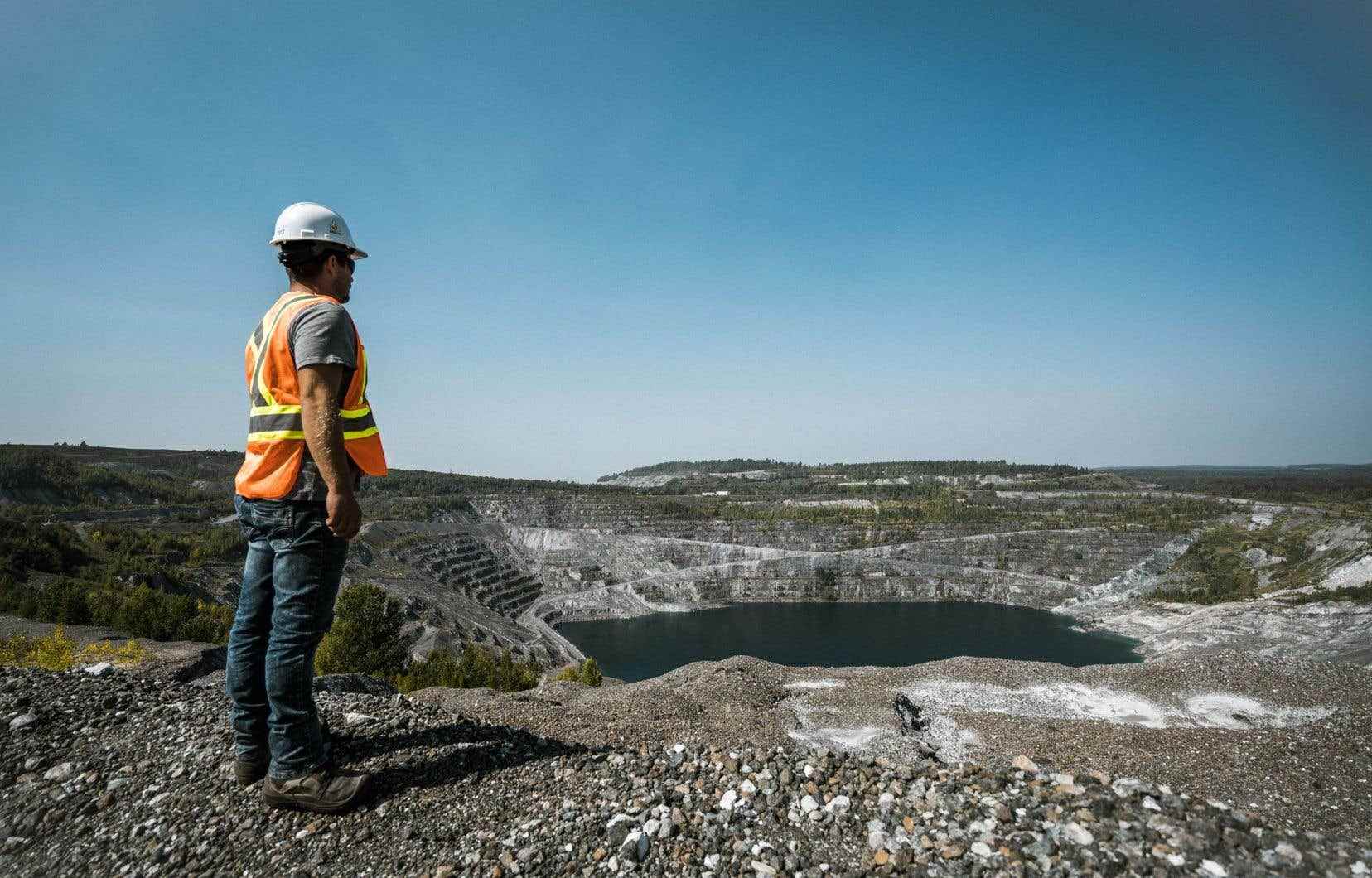Quebec has hundreds of old abandoned mining sites. Companies have found a way to give them a second life, while contributing to the fight against climate change: they are transforming them into immense carbon sinks.
Gray, lifeless, lunar: so many qualifiers that apply less and less to the dumps (heaps of mining debris) of the former Jeffrey mine in Val-des-Sources (formerly Asbestos), in the Eastern Townships. Since 2004, the Canadian company Englobe has been working to revegetate this huge open-air site degraded by decades of asbestos mining. Once called white gold, it has been covered in opprobrium since it was classified as a carcinogen in the late 1980s by the World Health Organization. Canada has banned its use in all its forms since 2018.
“We have revitalized nearly 300 hectares of the site. We still have a lot of work ahead of us, however; the tailings accumulated over the years extend over approximately 800 hectares, of which we own 450 hectares”, explains Serge Loubier, Business Development Director at Englobe, who works in the fields of engineering, soils and biomass. However, the contrast is strong. Where once stood heaps of rocks removed to access the asbestos deposit, now unfolds a green meadow, where bees forage and where white-tailed deer are sometimes even seen!
This greening project took shape thanks to fertilizing residual materials (MRF) recovered by Englobe from pulp and paper mills and municipal wastewater treatment plants. The principle ? Create a compost with this waste, then spread it on the waste rock, where nothing normally grows. Weakly contaminated soils are then sown with oats, for example. “The use of organic matter to boost the soil’s carbon capture potential is an approach that was little talked about a few years ago, but which is now rapidly emerging,” emphasizes Serge Loubier.
Sequester carbon through vegetation
In Black Lake, a town located about fifty kilometers away, in Chaudière-Appalaches, a project of the same ilk is taking place. For 10 years, Viridis Environnement has also been revegetating former asbestos waste dumps, those of the Granilake mine, thanks to its in-house MRF “recipes”. Specialized in the management of residual and organic materials, this Quebec company takes the approach further: since 2018, it has been collaborating in the establishment of a permanent vegetation cover made up of herbaceous plants and shrubs. Already, it is possible to see hybrid willows in full health, as evidenced by their size, which exceeds that of an adult.
Conducted in collaboration with the owners of the former mining site and a team of researchers from TELUQ University and the University of Quebec in Outaouais (UQO), this pilot project is intended to be ecological, economic, sustainable and socially responsible. “We’re returning material from it back to the earth, closing the carbon loop without incinerating anything or sending anything to landfill. In addition, the planting provides a host of ecosystem services, such as limiting dust, stabilizing the soil and reducing runoff,” explains Isabelle Fréchette, director of the Sherbrooke regional office of Viridis Environnement.
It is too early to tell on the survival and growth rates of the various species planted on the Black Lake tailings hills. Mystery also surrounds the medium- and long-term carbon sequestration potential of these trees; the team of Professor Nicolas Bélanger, from the Science and Technology Department of TELUQ University, is still working on these aspects of the project.
Want to turn the page
The creation of green oases using infertile dumps is well received by the local population, indicates a survey carried out by the Canada Research Chair in Ecological Economics at UQO and published in the scientific journal The Extractive Industries and Society : 81% of residents of Thetford Mines, Black Lake and Val-des-Sources surveyed want to see green gold erase the memory of white gold for good. “We were surprised by this membership rate, which testifies to a real desire to turn the page. The people of the area are however attached to this mining heritage, which is part of the regional heritage”, underlines Ann Lévesque, doctoral student at UQO, who piloted this study. Another surprise: of all the possible uses of these future green spaces, it is carbon storage that appeals the most to those surveyed. “Four out of ten respondents are nature lovers who demonstrate a real environmental awareness,” she analyzes.
This social acceptability of such projects bodes well for the future. In any case, the game is worth the effort: it is estimated that the dumps on the former Chaudière-Appalaches and Estrie mining sites contain approximately 800,000 tonnes of asbestos-containing mining residues which occupy approximately 2,308 hectares.
A first version of this article was published on September 6, 2021 on onepointfive.ca
This special content was produced by the Special Publications team of the To have to, pertaining to marketing. The drafting of To have to did not take part.
